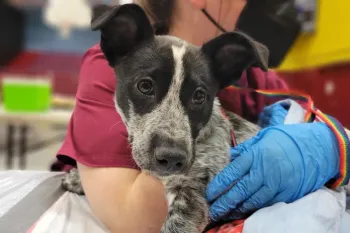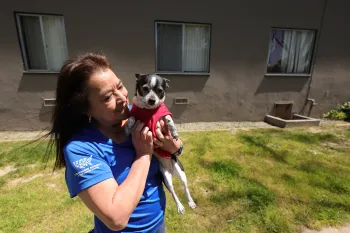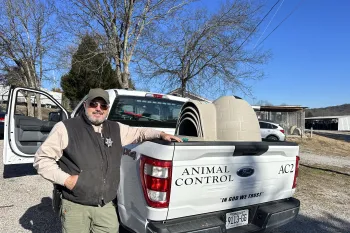A Newsweek article published this week shines a light on a growing problem in our society, one affecting millions of families across the U.S.: the inability to access and afford sufficient care and services for their beloved companion animals.
“Americans Can No Longer Afford Their Pets” reported on a survey that found that the costs of pet care had increased over the past year; most respondents to the poll, commissioned by Newsweek, expressed some level of concern about being able to financially support their companion animal. Through our own work, we have found that in the U.S., at least 20 million pets live in homes affected by poverty or in areas where resources are extremely limited or nonexistent.
We ardently believe that everyone deserves the experience of bonding with a companion animal, which is a source of love and comfort for all involved, and it follows that everyone must be able to access the resources they need to keep their companion animals healthy and happy.
To counter this inequity, we are increasingly emphasizing our work in what’s called “access to care,” which refers to a suite of methods and strategies to bring supplies and veterinary care to the families of companion animals who need it most. I’ve talked about access to care as a defining animal welfare issue of our time, and I’m immensely proud of our expanding work and emphasis on this issue.
For more than two decades, we’ve seen the profound difference that this stream of work can bring to people and their pets. Through Rural Area Veterinary Services and Pets for Life, we’ve met families with companion animals who face a multitude of systemic challenges. Some have fallen on such hard times and have had to face the unthinkable possibility of having to give up their pets for lack of funds. We’ve worked with families to provide solutions through these pioneering programs that bring pet care and supplies into communities that need them. Just last year, through these programs, more than 14,800 pets received 66,000 services. Through our mentorship and supported partners, another 31,600 pets received over 100,000 services. With the support of corporate partners and animal lovers, we donated almost 9 million pounds of pet food and 2,233 pallets of pet supplies valued at over $30 million to underserved communities.
And we’re working to expand our reach even further. As Amanda Arrington, the vice president for our access to care campaign, told Newsweek: “We are working to increase equity in access to care through a variety of interconnected approaches: community outreach, policymaking, training for veterinary and animal welfare professionals, corporate partnerships and direct care programs that provide veterinary care, pet supplies, other animal care services and information at no cost to pet owners.”
Access to care is a grassroots effort that is recasting ways to support the human-animal bond in our homes and communities. You can help by:
- Offering support to your neighbors and your community. This can take many forms: Some people may need a temporary home for their pet while they move or recover from an illness. Others may benefit from a neighbor offering to go to the pet store for supplies for them. We can all help keep pets and people together.
- Supporting animal rescues and shelters by asking how you can get involved, donating funds or time.
- Volunteering if you’re a veterinary professional or student; please visit our RAVS resource page for information about how to volunteer or join the Humane Society Veterinary Medical Association to engage in our training and advocacy efforts.
- Celebrating the human-animal bond by participating in our More Than a Pet campaign.
I’ve said it before, and I’ll say it again: Animal and human welfare cannot be viewed independently. If we want to protect companion animals, we must support the people who love them.
Next week, we’ll be celebrating exceptional contributions towards advancing equity in access to pet resources in underserved communities, so stay tuned.
Follow Kitty Block @HSUSKittyBlock.




